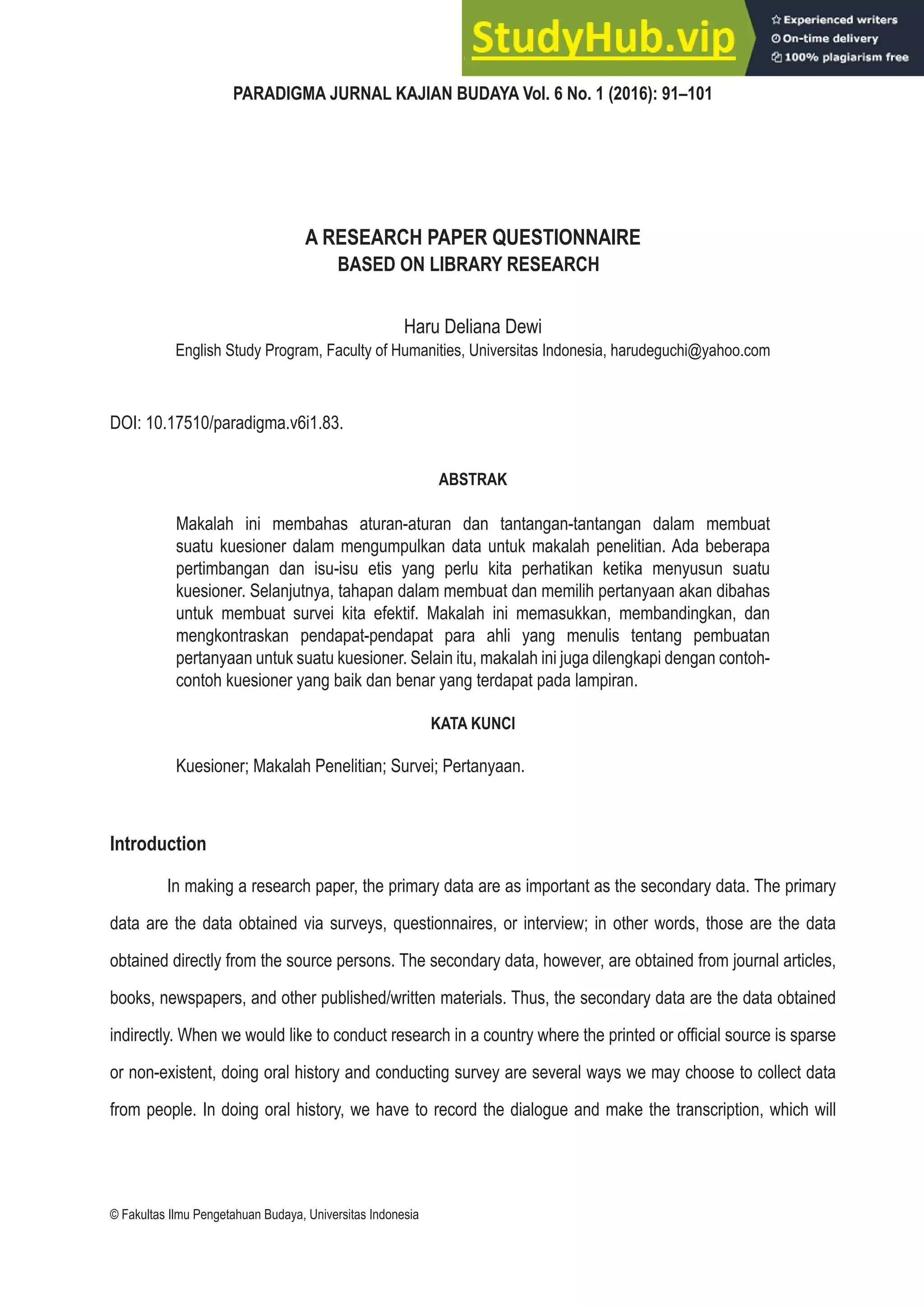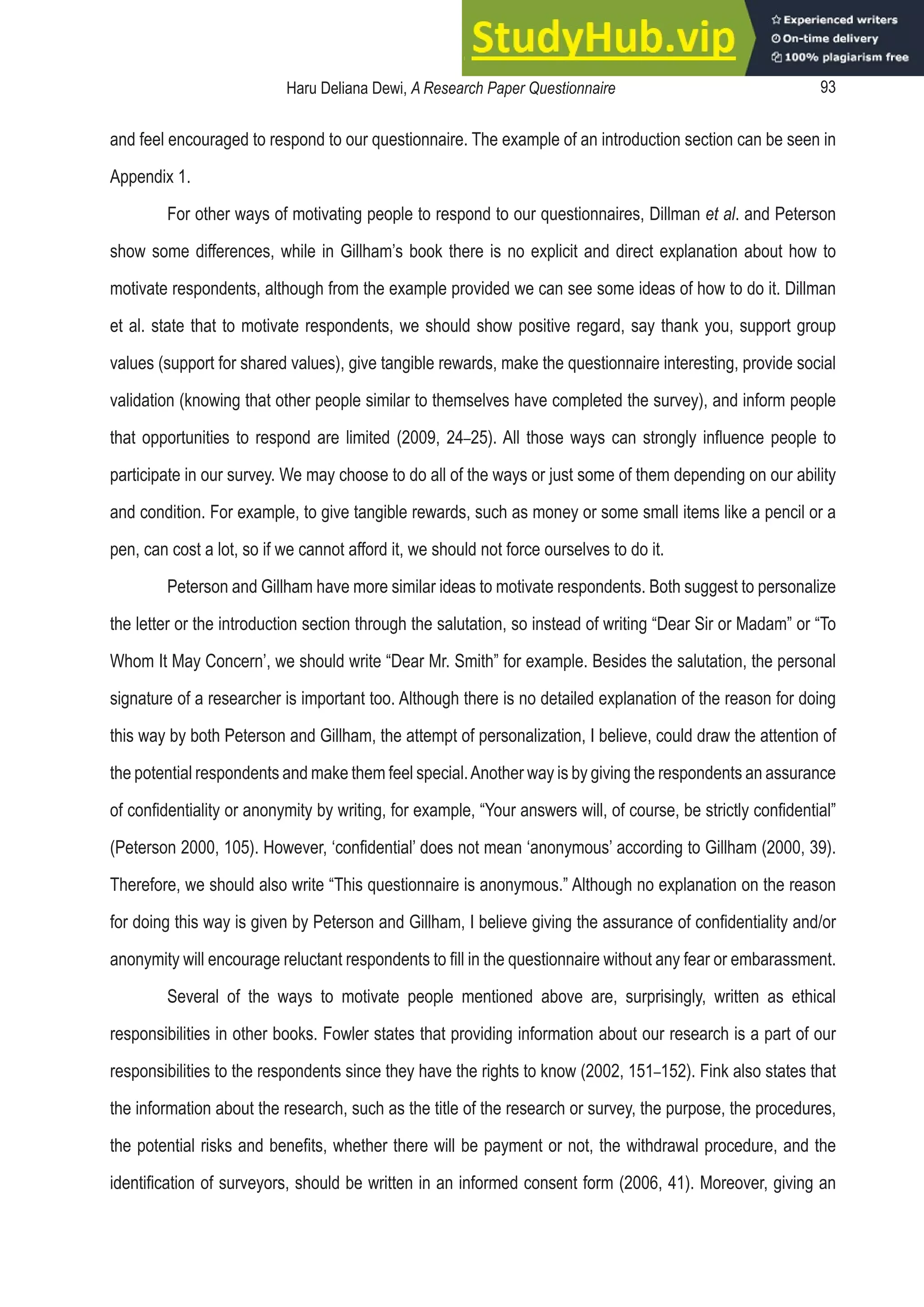This document discusses considerations for developing an effective questionnaire to collect primary data for a research paper. It covers ethical issues to consider, such as providing information to respondents and ensuring confidentiality. It also addresses best practices for constructing the questionnaire, such as using a mix of open-ended and closed-ended questions, ordering questions from simple to complex, and clearly defining terms. Examples of questionnaires in the appendix illustrate these points. The goal is to design a questionnaire that will obtain significant data needed to strengthen the research paper while respecting respondents.










